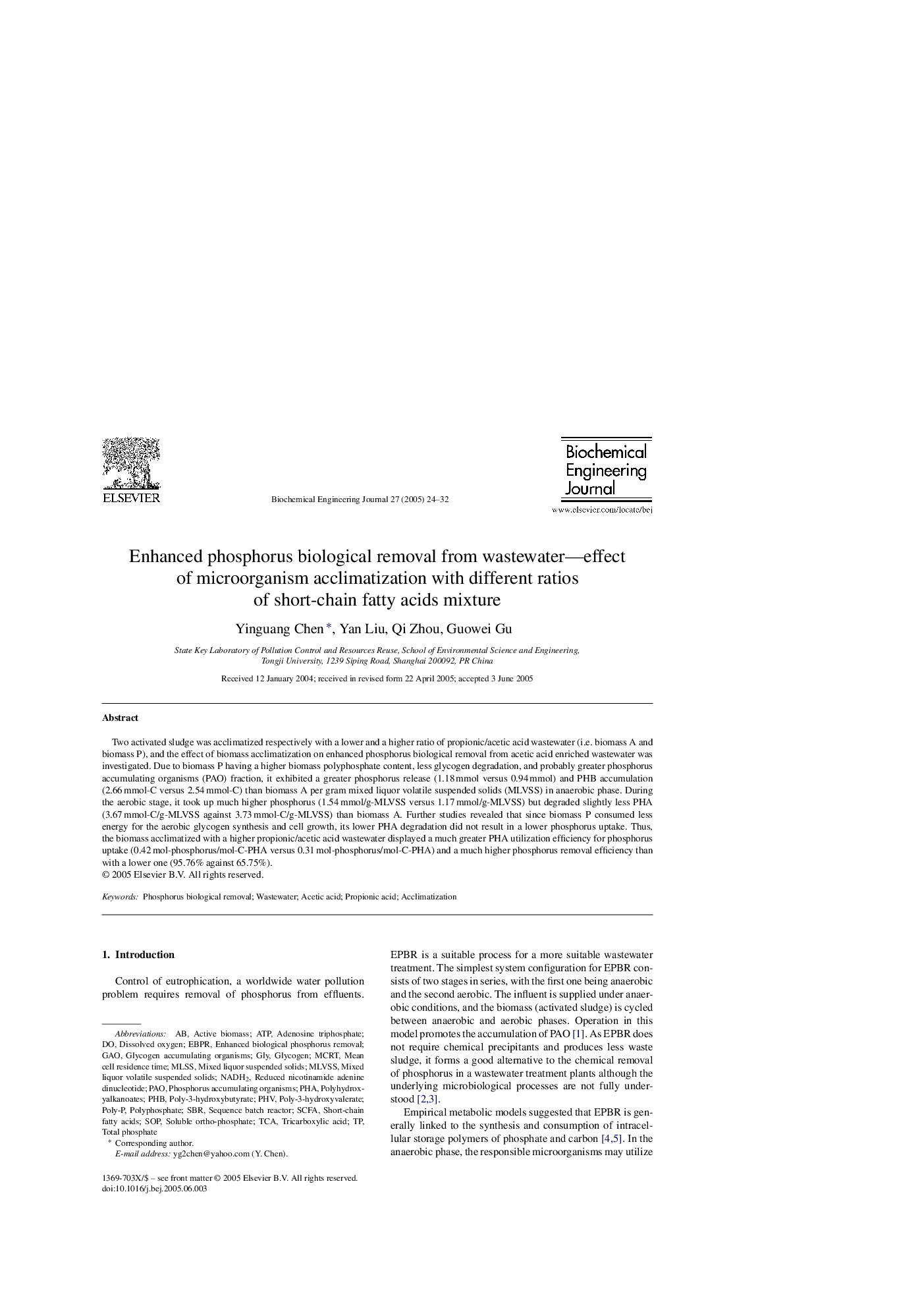| Article ID | Journal | Published Year | Pages | File Type |
|---|---|---|---|---|
| 10160703 | Biochemical Engineering Journal | 2005 | 9 Pages |
Abstract
Two activated sludge was acclimatized respectively with a lower and a higher ratio of propionic/acetic acid wastewater (i.e. biomass A and biomass P), and the effect of biomass acclimatization on enhanced phosphorus biological removal from acetic acid enriched wastewater was investigated. Due to biomass P having a higher biomass polyphosphate content, less glycogen degradation, and probably greater phosphorus accumulating organisms (PAO) fraction, it exhibited a greater phosphorus release (1.18Â mmol versus 0.94Â mmol) and PHB accumulation (2.66Â mmol-C versus 2.54Â mmol-C) than biomass A per gram mixed liquor volatile suspended solids (MLVSS) in anaerobic phase. During the aerobic stage, it took up much higher phosphorus (1.54Â mmol/g-MLVSS versus 1.17Â mmol/g-MLVSS) but degraded slightly less PHA (3.67Â mmol-C/g-MLVSS against 3.73Â mmol-C/g-MLVSS) than biomass A. Further studies revealed that since biomass P consumed less energy for the aerobic glycogen synthesis and cell growth, its lower PHA degradation did not result in a lower phosphorus uptake. Thus, the biomass acclimatized with a higher propionic/acetic acid wastewater displayed a much greater PHA utilization efficiency for phosphorus uptake (0.42Â mol-phosphorus/mol-C-PHA versus 0.31Â mol-phosphorus/mol-C-PHA) and a much higher phosphorus removal efficiency than with a lower one (95.76% against 65.75%).
Keywords
TCASBRPHVSCFAGaOMLVSSMCRTMLSSSequence batch reactorSOPPolyhydroxyalkanoatesPAOEBPRNADH2PHAPHBAdenosine TriphosphateATPAcetic acidtricarboxylic acidPropionic acidShort-chain fatty acidsAcclimatizationdissolved oxygenActive biomassEnhanced biological phosphorus removalWastewaterphosphorus accumulating organismsmixed liquor suspended solidsmixed liquor volatile suspended solidsPolyphosphatePoly-3-hydroxybutyratereduced nicotinamide adenine dinucleotidetotal phosphateGlyGlycogenGlycogen accumulating organisms
Related Topics
Physical Sciences and Engineering
Chemical Engineering
Bioengineering
Authors
Yinguang Chen, Yan Liu, Qi Zhou, Guowei Gu,
